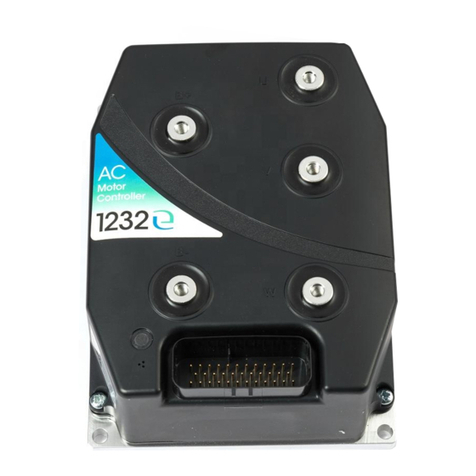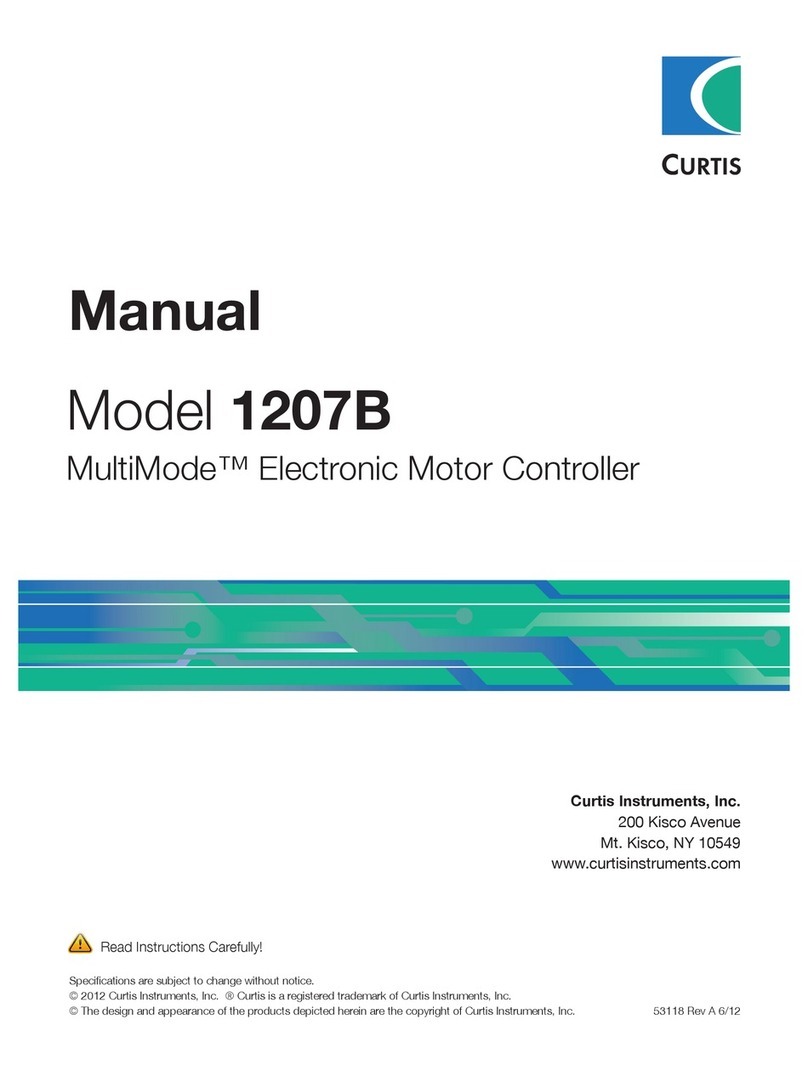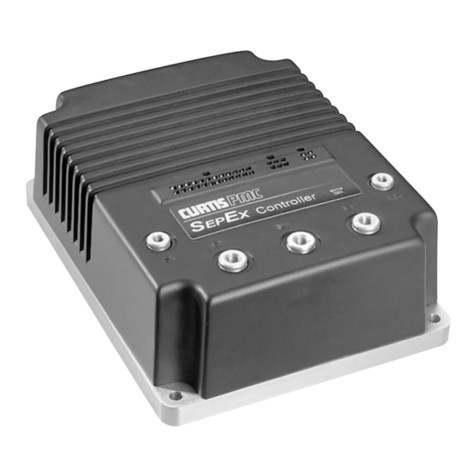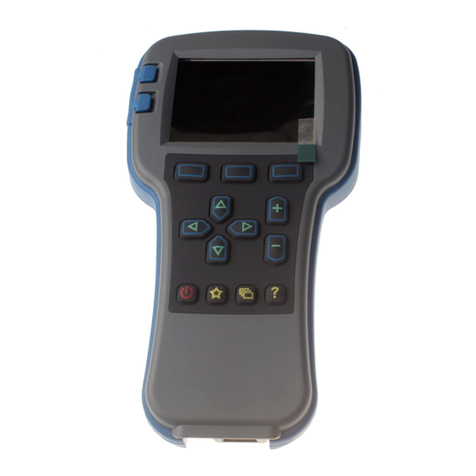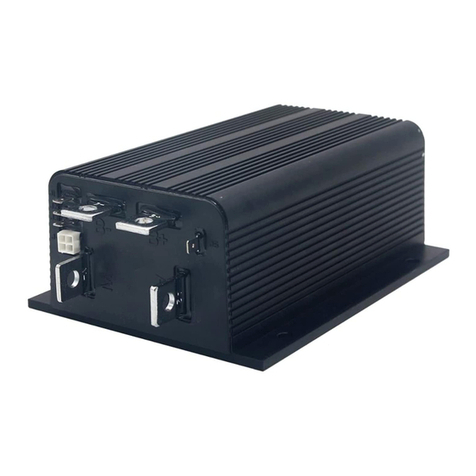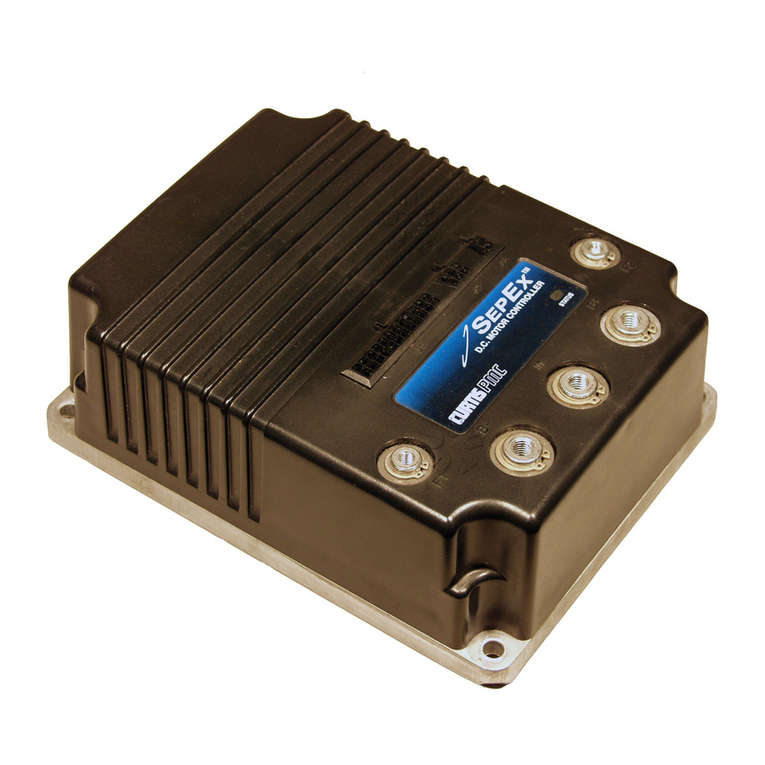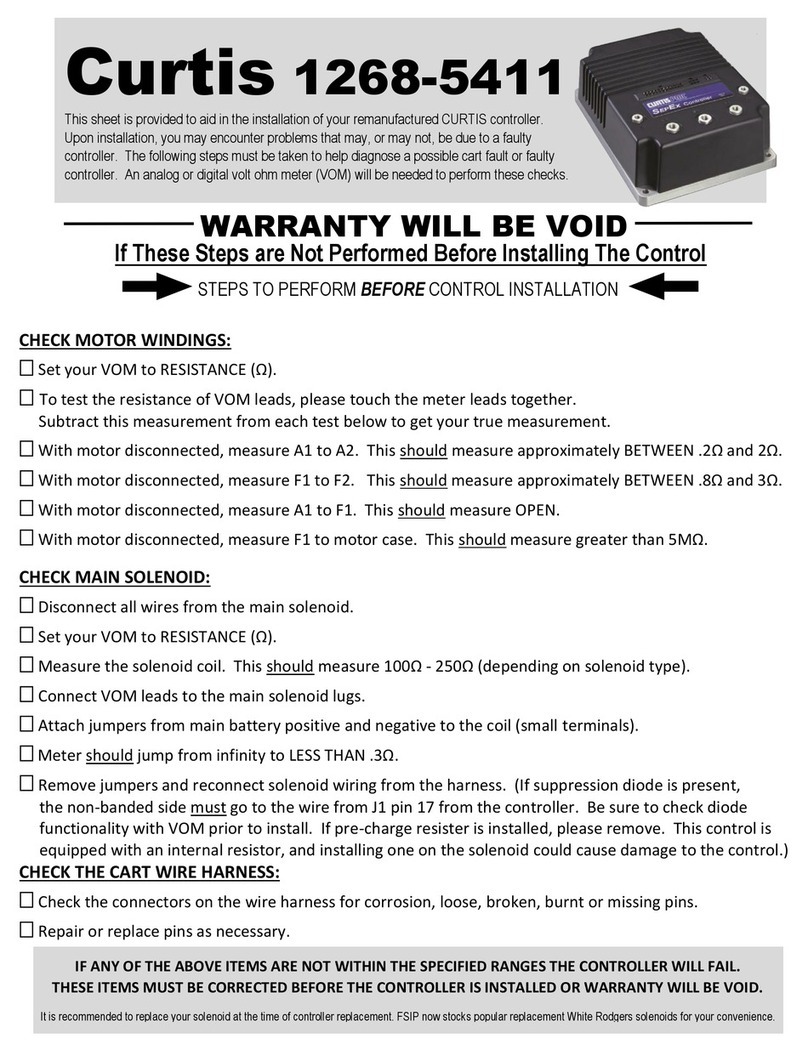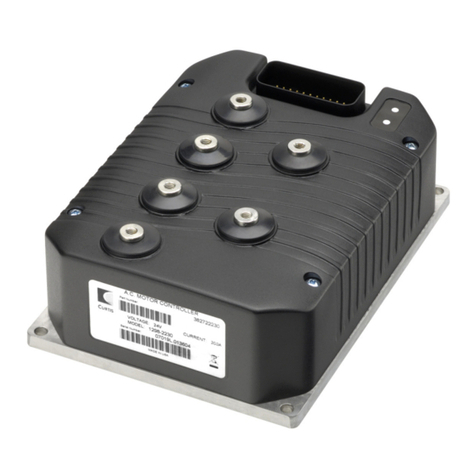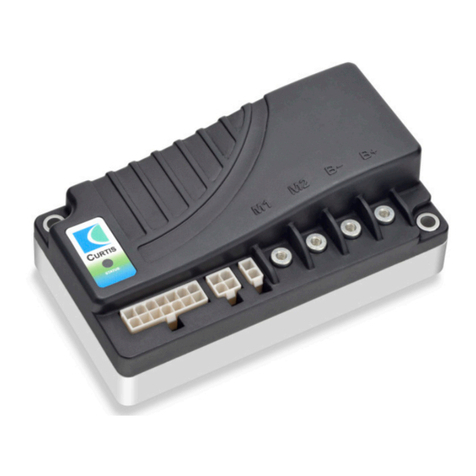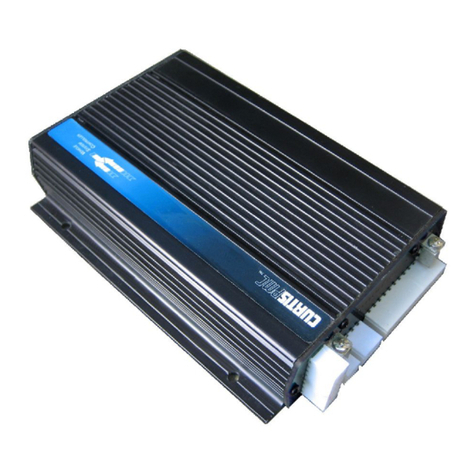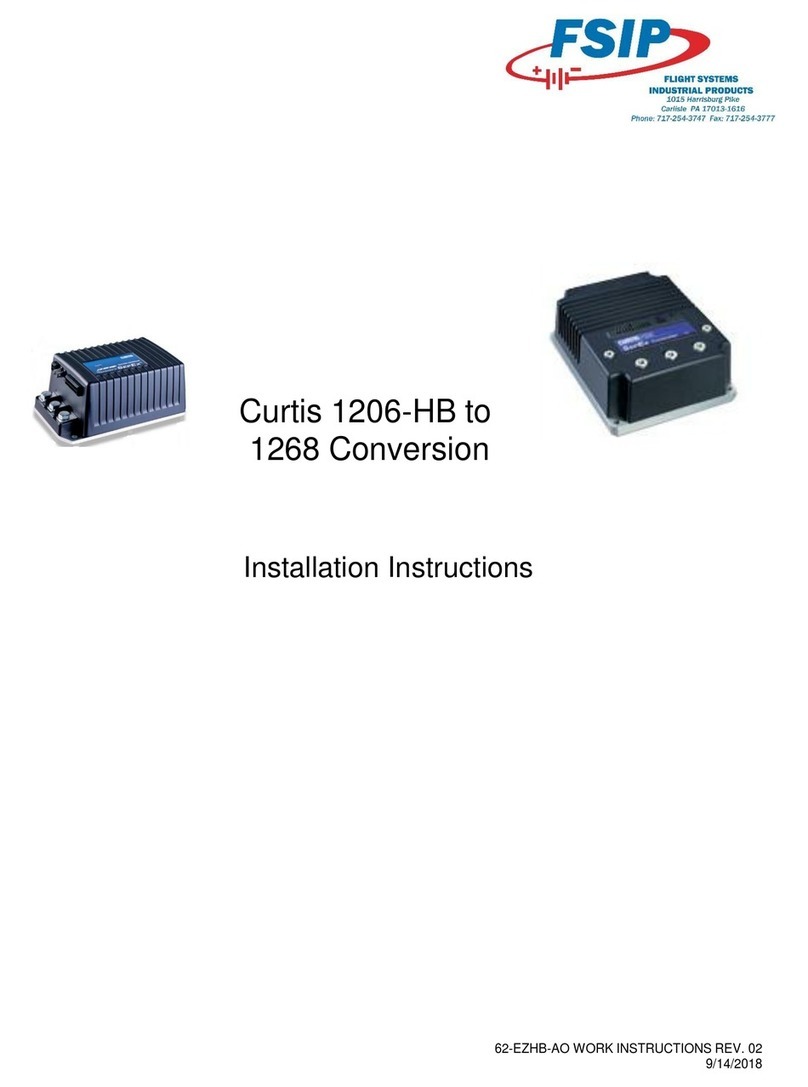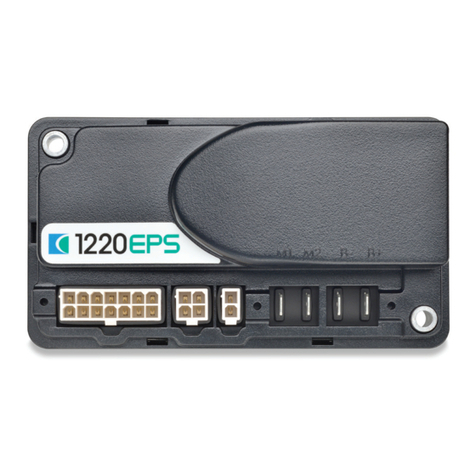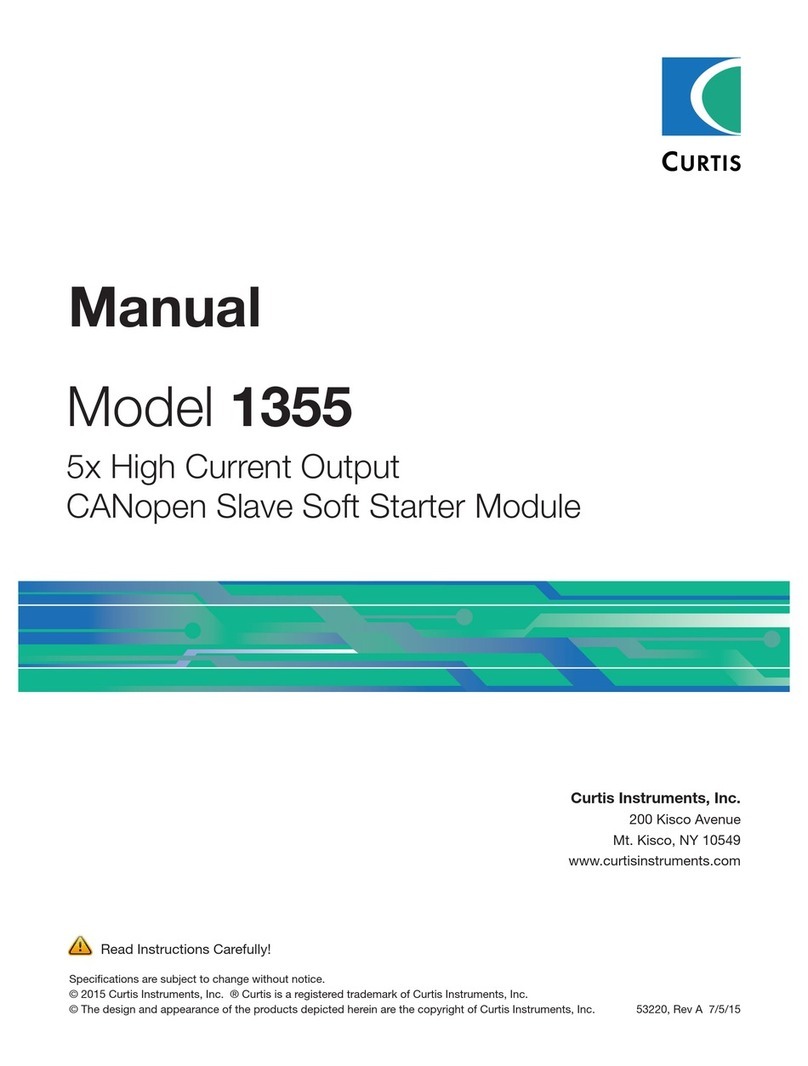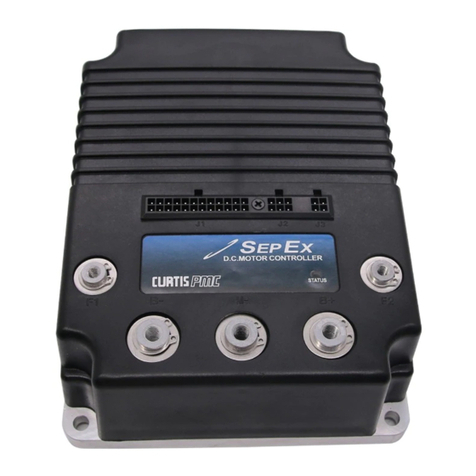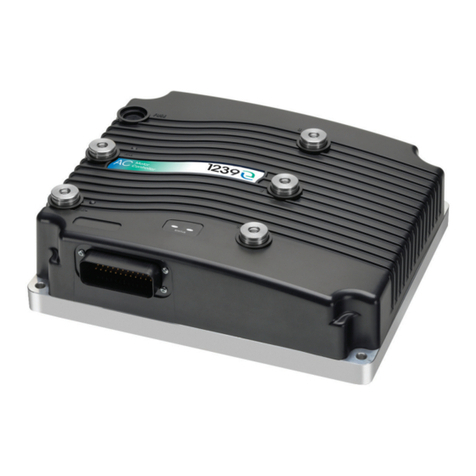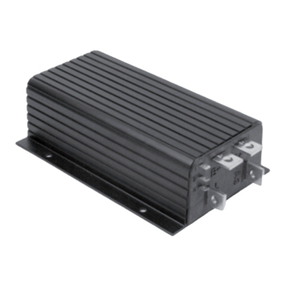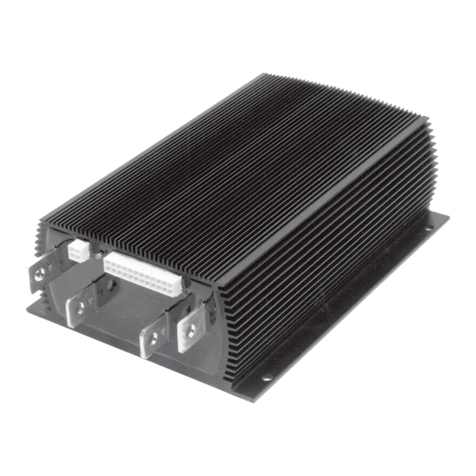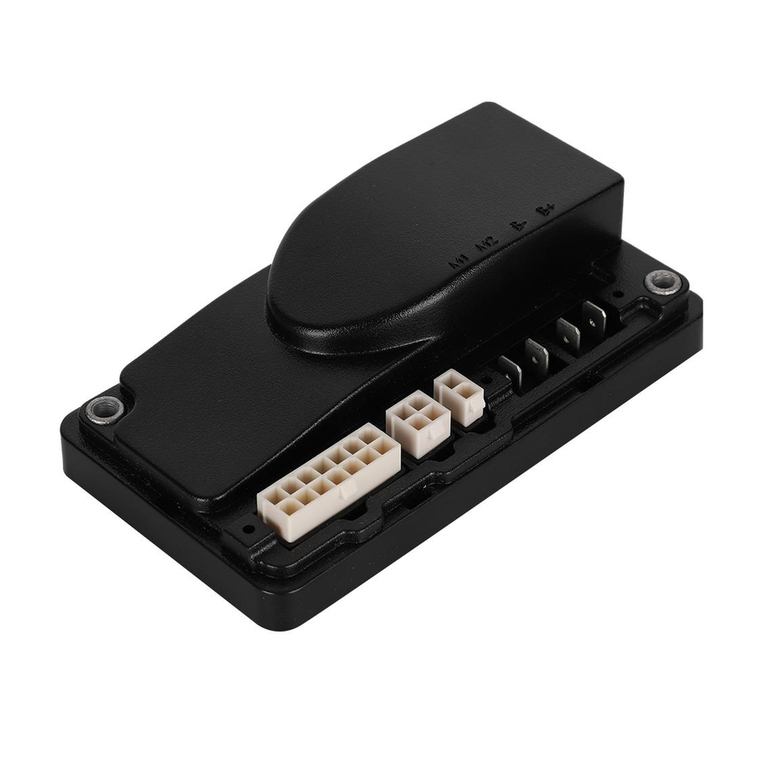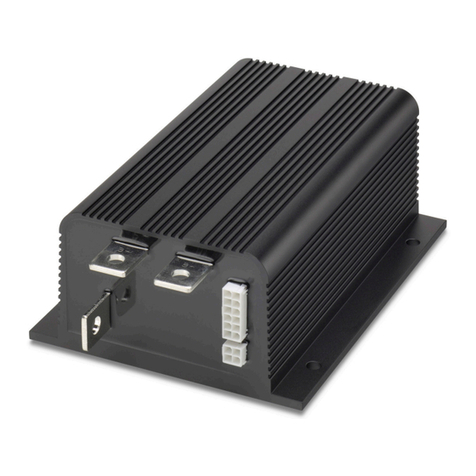
2 Curtis 1222 Manual, os 15
29 JANUARY 2013 DRAFT
✓ 16 kHz PWM switching frequency ensures silent operation
across the 0–200Hz stator frequency range.
✓ Advanced PWM techniques produce low motor harmonics,
low torque ripple, and minimized heating losses, resulting
in high efficiency.
✓ 70A RMS 2-minute current output.
✓ 24–48V nominal supply voltage.
Versatile Steering Input and Feedback Options
✓ Steering command input via CAN, dual redundant
quadrature encoder, sine/cosine sensor, sawtooth sensor,
or analog voltage inputs.
✓ Steered angle feedback via dual redundant homing switch,
quadrature encoder, sine/cosine sensor, sawtooth sensor, or
analog voltage inputs.
✓ Fully programmable input/output ratio mapping.
✓ Configurable homing methods, center offset, auto-center,
and end-stop protection.
✓ Programmable force feedback driver for command input
devices featuring variable friction tactile feedback (TFD).
Maximum Safety
✓ Dual redundant configuration of all safety-related parts.
✓ Two microprocessors, each with its own EEPROM memory.
✓ Separate input paths to each micro for all input and feedback
signals.
✓ 5A high-side fault output driver, consisting of two switches
connected in series; each switch is controlled by one micro
with independent supervision.
✓ Meets the requirements of the latest international functional
safety standards.
Unmatched Flexibility
✓ CANopen system communications.
✓ 35-pin AMPSEAL logic connector.
✓ Software includes a library of pre-defined AC steering motor
types from various manufacturers.
✓ Programmable motor temperature input prevents thermal
damage to motor and supports all commonly used thermistors.
1 — OVERVIEW
